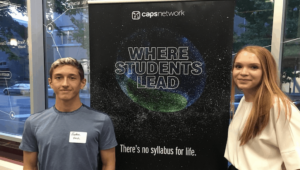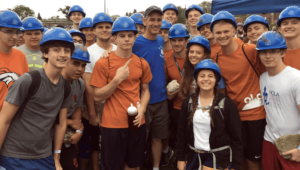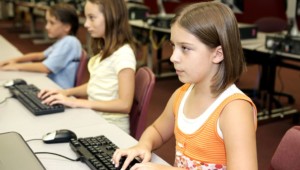The blended world
Our kids already live in a blended world. K-12 is starting to catch up with a variety of models that combine the best of online learning and onsite support. Here’s 5 trends signaling a blended singularity:
Schools become blended. The biggest growth area for online learning is traditional schools. They are adding specialty courses (e.g., expanded AP offerings) and increasingly making use of online curriculum (e.g., Prentice Hall, Carnegie Learning, Agile Mind).
Charters become blended. A few regional charter operators are opening blended schools (e.g., Rocketship, Responsive Education) and the name brand CMOs will follow suit (to push academic results and to improve sustainability and scalability).
Virtual goes blended. We’ll see at least 4 of the virtual school operators open brick-n-click models next September and a couple will be involved in blended restarts (struggling schools closed and reopened with a digital core curriculum).
Credit Recovery becomes Schools. When online learning figures are quoted they usually just include kids in virtual charters and enrolled in virtual courses (probably 2 million second semester of this school year). But there are more students than that learning online in credit recovery programs like NovaNet and SuccessMaker (Pearson), Apex, Compass, and Plato. Over the last few years, credit recovery software became core to a burgeoning blended alternative school market including CIS Performance Learning Centers, AdvancePath, and Mavericks.
SES becomes Student Supports. A dozen of the biggest and best SES providers have branched out offering extended day options and targeted interventions for school districts and charter networks. Many of them utilize computer-based instruction as part of their offering.
The Race to the Top grant program focuses heavily on teacher effectiveness. But blended learning will be a big part of the broader ‘instructional effectiveness’ challenge. With the big STEM push, how else are we going to get great physics instruction to rural Louisiana or Detroit?
The US market for instructional services is likely to double in size from $25b to $50B over the next 5-6 years as the market converges around blended solutions—combinations of online and onsite learning. Entrepreneurial opportunities (all with cross border opportunities) include:
- comprehensive solution platforms (i.e., content, learning games, assessment, guidance, social network, professional development, LMS, etc)
- school improvement utilizing an online platform
- school management utilizing an online platform (contracts, charters, and backoffice services)
In addition to formal learning, the informal direct to consumer and peer-to-peer learning space will provide lots of opportunity for edu-entrepreneurs.
As the sector migrates from batch-print to personal-digital, the distinction between content and operations will become less important and less controversial. A world of blended solutions will provide interesting options for educators and effective and engaging options for students.






John Danner
Well, not sure I like the characterization that Rocketship is not name-brand, but thanks for the recognition for being the pioneer!